DOI:
https://doi.org/10.14483/2322939X.10703Publicado:
2016-07-13Número:
Vol. 12 Núm. 1 (2015)Sección:
Investigación y DesarrolloComputer games to teach deaf children in literacy acquisition
Palabras clave:
educational games, objects for learning, teaching of deaf children / juegos educativos, objetos de aprendizaje, sordera. (es).Palabras clave:
educational games, objects for learning, teaching of deaf children / juegos educativos, objetos de aprendizaje, sordera. (en).Descargas
Referencias
R. M. Quadros; L. Karnopp, “Língua Brasileira de Sinais: Estudos Línguísticos”, Porto Alegre: Artes Médicas, 2004.
A. Gesser, “Libras? Que Língua é Essa? Crenças e Preconceitos em torno da Língua de Sinais e da Realidade Surda”. São Paulo, Parábola Editorial, 2009.
R. M. Quadros, “Aquisição de L1 e L2: O Contexto da Pessoa Surda”. In Anais do Seminário: Desafios e Possibilidades na Educação Bilíngue para Surdos. Rio de Janeiro, p. 70-87, 1997
J. T. Duffy, “Ten reasons for allowing deaf children exposure to American sign language”. ERIC: Washington, D.C., 1987.
L. F. Brito, “Integração Social e Educação de Surdos”, Babel Editora, 1993.
R. E. Johnson; S. K Liddell; C. Erting, “Develando los programas: princípios para um mayor logro em la educación del sordo.” El aula del sordo. Pietrosemoli, L. (compilador y traductor). Textos de la Universidade de Los Andes. Coleción: Ciências Humanísticas. Série: Linguística, 1989.
R. M. Quadros, “Aquisição de L1 e L2: O Contexto da Pessoa Surda”. In Anais do Seminário: Desafios e Possibilidades na Educação Bilíngue para Surdos. Rio de Janeiro, p. 70-87, 1997.
J. A. Lencastre; J. H. Chaves, “Ensinar pela Imagem”. Revista Galego-Portuguesa de Psicoloxía e Educación, n.8, pp. 2100-2105, 2003.
L. M. L. Campos; A. K. C. Felicio; T. M. Bortolotto. “A produção de jogos didáticos para o ensino de Ciências e Biologia: uma proposta para favorecer a aprendizagem”. Caderno dos
Núcleos de Ensino, 2003, pp. 35-48, 2003.
M. Goldfeld, “A criança Surda: linguagem e cognição numa perspectiva sócio-interacionista”. São Paulo: Plexus, p. 176, 1997.
L. S. Vygotsky, “Obras escogidas: fundamentos de defectología”. Tomo V. Madrid: Visor, 1997.
M. S. Barros, “Estudo de Usabilidade em Jogos Educativos 3d: Um Estudo de Caso”. Monografia. UFLA – Universidade Federal de Lavras, Lavras/MG, junho 2011.
S. Miranda, “No Fascínio do jogo, a alegria de aprender”. In: Ciência Hoje, v.28, pp. 64-66, 2001
R. M. S. Couto, “Processo de Projeto do Jogo Multi-Trilhas: Um exemplo de Design Participativo”. In VIII Congresso Brasileiro de Pesquisadores e Desenvolvimento em Design, São Paulo, 2008, pp. 4107 – 4111.
Librasnet. “Libras Brincando e Aprendendo”. 10/05/2013.
C. Boscarioli; J. J. Baqueta; C. G. Salles; J. P. Colling, “Investigando a Usabilidade em Jogos Educacionais Baseados em Imagens e Vídeos para o Ensino de Crianças Surdas”. In Anais do Seminário: V CBEE – Congresso Brasileiro de Educação Especial. São Carlos/SP, 2012.
L. S. Vygotsky, “Thought and language”. Cambridge, MA: MIT Press, p. 149, 1986.
L. S. Vygotsky, “The collected works of L. S. Vygotsky”. Vol. 5. Child psychology (R. W. Rieber, Ed.). New York: Plenum, p. 157, 1998.
L. S. Vygotsky, “Psicologia Pedagógica”. 2ª ed. – São Paulo: Martins Fontes, 2004.
M. G. D. Facci, “Valorização ou esvaziamento do trabalho do professor?: um estudo crítico-comparativo da teoria do professor
reflexivo, do construtivismo e da psicologia vigotskiana”. Campinas, SP: Autores Associados, 2004.
BLENDER. “Cycles blender engine” 02/06/2014.
JMONKEY. “JMONKEY ENGINE” 02/06/2014. Site oficial do Projeto.
Cómo citar
IEEE
ACM
ACS
APA
ABNT
Chicago
Harvard
MLA
Turabian
Vancouver
Descargar cita
Visitas
Descargas
Computer games to teach deaf children in literacy acquisition
Knowledge Management In Education With Tic In The Transformation Of School
Recibido: 11-noviembre-2014
Modificado:12-noviembre-2014
Aprobado: 28-noviembre-2014
Clodis Boscarioli
Bacharel em Informática, Universidade Estadual de Ponta Grossa, Brasil. Mestre em Informática, Universidade Federal do Paraná, Brasil. Doutor em Engenharia Elétrica, Universidade de São Paulo, Brasil. Afiliación institucional: Universidade Estadual do Oeste do Paraná, Brasil. Correos electrónicos: boscarioli@gmail.com o clodis.boscarioli@unioeste.br
Jeferson José Baqueta
Bacharel em Ciência da Computação, Universidade Estadual do Oeste do Paraná, Brasil. Correo electrónico: jeferson_baqueta@hotmail.com
Rosiene Queres de Aguiar Soares
Licenciada em Pedagogia, Universidade Estadual de Maringá, Brasil. Especialistaem Educação Especial, Faculdades Integradas do Vale do Ivaí. Afiliación institucional: Centro de Capacitação dos Profissionais da Educação e Atendimento às Pessoas com Surdez CAS. Correo electrónico: roqueaso@hotmail.com
João Paulo Colling
Bacharel em Ciência da Computação, Universidade Estadual do Oeste do Paraná, Brasil. Correo electrónico: juaum_jpc@hotmail.com
Guilherme Felipe Zabot
Graduando em Ciência da Computação, Universidade Estadual do Oeste do Paraná, Brasil. Correo electrónico: zabot.gui@gmail.com
Abstract
Educational games ought to be support instruments providing elements that contribute to reinforcing previously learned school subjects. This paper discusses the use of educational games when teaching deaf children, and the importance of visual resources, such as images and videos, at building their knowledge. It also presents Conceitos, a game oriented to deaf children in their literacy development that aids the learning of everyday concepts both in Sign Language and written Portuguese, by means of interactions with tridimensional objects.
Keywords
educational games, objects for learning, teaching of deaf children / juegos educativos, objetos de aprendizaje, sordera.
1. INTRODUCCIÓN
Everyone has the right to take part in an environment that makes way for appropriate cultural and social development and, most importantly, for quality education. When it comes to the deaf, where learning is almost exclusively founded on an image-composed system, interaction with classroom peers is limited by communication obstacles, which can affect their process of knowledge appropriation, not to mention the inherent differences between hearing and deaf cultures.
It gets more challenging in the classroom environment, for information exchange from the deaf student to other school members, and vice versa, is constrained due to a barrier imposed on by the differences between spatial-visual (deaf) and oral (hearing) language, which can further narrow their academic performance. Differences found between these languages differ in structure, but both converge on the greater objective, which is communication. The Portuguese Language is an oral-auditory language linearly founded on sounds, containing contextualized anaphoric references, besides plenty of gender specific words. Its smallest units are phonemes, and communication happens by means of sound production emitted through the mouth, which are captured by ears, and writing is alphabetical. And the Brazilian Sign Language – Libras – according to [1], is a visual-spatial language whose characteristics are tuned to the visual experiences of the very deaf community. It is not linear, for it may combine facial expressions with hand movements. It may use anaphoric references by establishing spots in space, and it is not gender specific. Its tiniest units are hand configurations, and communication happens through the display of hand signs, body movements, use of space and facial expressions – all coming in through visual medium. It is worthy of mention that, as well as oral-auditory languages, which are not universal, sign languages are also distinct throughout countries. As for grammatical structures, the Portuguese Language is quite rigorous concerning sentence building, having a logical sequence that follows orality whereas the Brazilian Sign Language, which is entirely disconnected from the oral language, has its own grammar and rules, and that shows the way the deaf process their thoughts.
As stated by [2], languages end up exerting an enormous influence on the relationships individuals establish within society, for if a given group of individuals share the same language, that language has the power to bring people closer and to diminish differences. However, should the language not be the same, relationships are jeopardized due to existing communication difficulties.
Problems incurred by the use of languages become even more evident when a deaf person is a child in their literacy phase, who may not yet be well acquainted with the Brazilian Sign Language, a case in which information ought to be presented in a clear, objective way so as to avoid interpretation mistakes on the kids’ side.
In consonance with [3], it must be acknowledged that the alphabetical writing of the Portuguese Language in Brazil is not suitable for representing the signification of concepts from the Brazilian Sign Language – a visual-spatial language. And, as opposed to BSL, the Portuguese Language (oral) is not natural to deaf children, and that is a great setback in their education.
During their literacy process, deaf children will learn written Portuguese and, at the end of such process, they will be able to read and write texts in Portuguese. In practice, however, mastering the Portuguese Language is no trivial a task for deaf individuals, for it can take years, chiefly due to the grammatical differences between Portuguese and BSL. In fact, an exceedingly contradictory fact is that students have not often mastered their mother language yet, which in this case is BSL, but they have to learn both languages at the same time, regardless of their many differences.
Such an evident mismatch between BSL and Portuguese, as well as the attempts at teaching them one same way, bring about the so-called “signalized Portuguese” or simultaneous communication – SIMCOM. Such phenomenon, which is similar to the transliteration of languages, is quite discredited by the deaf community and researchers, as well as by foreign authors [4], [5], [6]. Trying to utilize the structure of the Portuguese Language in a way as to express it in sign language belittles the very structure of BSL, besides also dismantling Portuguese. It thus enables for a persisting discrepancy between students’ reading and writing skills [7].
The described perspective compels us to investigate alternatives that may substantially contribute to an effective teaching of BSL, which, when well rooted, might be used for teaching a second language – Portuguese, in this case.
A first approach to be used to enhance the learning performances of deaf children and, furthermore, to do away with the need of written Portuguese, is the use of devices or image-based technologies, which, if associated with BSL, may contribute to their understanding different world views and information in general. However, as seen in [8], teaching through image is not only a source of information for the deaf, but it also ought to be founded on knowledge and experiences the deaf student has entertained, for image-based teaching will only make sense if the concepts displayed in images have been previously understood and memorized by the individual.
In keeping with [9], teaching through image is a complex process, but generally, when conducted the proper way, it prompts meaningful learning, that is, students being able to integrate new knowledge onto their previous knowledge, due to an imbalance and conflicts provoked by a new piece of information, which can lead to conceptual changes
Then, computer games with an educational approach stand out as a learning object for deaf children, for most of them emphasize the use of image and animation while interacting and teaching, besides displaying information in an attractive, agreeable way. That is why the number of tool-development initiatives has been increasing, the result of which is a greater availability of such games.
According to [10], games facilitate the relationship kids entertain with objects and with themselves. Kids evolve from circumstantially playing on their own to circumstantially playing with others. [11] reports that playing is necessary for children, for it propels them into a new attitude toward reality. It should be remembered that children integrate actions in an imaginative context where decision-making for real life is grounded.
This paper aims at discussing the use of educational games as learning objects when teaching elementary school deaf children, as well as at presenting a new game, called Conceitos, which may aid the construction of world views by means of interaction with virtual environments and tridimensional objects, where kids have written Portuguese and BSL as metacommunication resources displayed on the game’s interface.
This document is organized as follows: Section 2 discusses the role of educational games in deaf children education and how important visual aids are when teaching kids through educational games. Then, Section 3 presents the Conceitos game, which is still in development, targeted at literacy-stage deaf children. The game is still to be investigated in its capacity to promote BSL and written Portuguese acquisition. At last, Section 4 brings conclusions and research perspectives.
2.0 EDUCATIONAL GAMES FOR DEAF CHILDREN
As opposed to commercial systems, games exhibit a more artistic character, with basic requisites ranging from being intuitive and clear to attractive and fun. It is seen not as an application or a conventional system, but as a computational resource whose purpose is to amuse and entertain players.
Just like any computational system, an educational game must solve the user’s difficulties and limitations by providing resources that can facilitate their interaction. Target audience characteristics must be taken into account so that the game looks attractive and acceptable to the final user, as mentioned by [12]. In accordance with [13], by means of educational games players may advance:
- Cognition, personality and intelligence development— all are central to the construction of knowledge;
- Affection, sensibility and esteem development, deepening friendship and affection ties;
- Socialization, emulation of togetherness;
- Motivation, curiosity, challenges and mobilization;
- Creativity.
Due to the enormous amount of visual resources employed in educational games to provide attractiveness and interaction qualities, such games end up becoming interesting educational tools which may contribute to the processes deaf individuals undergo. From a very early age, they have grown used to interpreting the messages from the environment they are in through images and gestures.
Regardless of the goal which a game is developed for, it should take the player’s skills into account, since they are entirely rooted on interaction and communication with the user. Quality of interaction between game and gamer is central to the learning process, and it also directly influences the user’s decision-making in game-imposed situations. Educational games should not only be intuitive in regards to gameplay, but also offer high quality graphic interfaces which can be easily understood by the gamer, therefore enhancing its gameplay.
When a game is education-oriented, communication or messaging between system and user should be taken as a prime child development contributing factor. Starting from the user’s characteristics, games should suggest resources and ways that maximize information reception. At the same time, it is crucial to keep students amused while the teaching happens, that is, games should provide means to make the gamer feel part of the virtual world, always in search for more information and challenges.
According to [10], games with unchanging rules coach children into controlling their impulses, for the biggest pleasure is in fact to finish the game (sometimes winning). That is an important developmental stage, because the child lays instinctive actions aside to cater to their own momentary needs, besides getting to learn how to wait, so they can at last achieve their final objective based on social rules.
Therefore, due to the strong use of image and animation in the interaction between games and children, we assert games can promote the cognitive development of deaf children (players) by having them fulfill game-required objectives, as is the case with Multi-trilhas [14] and Libras Brincando e Aprendendo [15].
According to [14], Multi-Trilhas aims at aiding deaf children at the early stage of written Portuguese acquisition as a second language, by means of a multidisciplinary approach focused on design and grounded on a bilingual approach to deaf education. Figure 1 shows Multi-Trilhas’ home-screen, where players are supposed to type in a name and choose an avatar which will follow the player throughout the whole interaction. As Figure 1b demonstrates, the game contains educational activities targeted at teaching written Portuguese, such as a connect-the-dots task, where the user is supposed to link a sequence of dots till a picture is formed. Then the word in Portuguese which corresponds to the formed picture is presented, as well as a representation of that word in sign language recorded by a female interpreter. That is an essential resource for communication between the system and the deaf child.
In consonance with [15], the Libras Brincando e Aprendendo software seeks to point out to a number of concepts connected to several school subjects and their teaching and learning, such as Math, Science, Geography and Portuguese, and it features many categories that can contain one or more sceneries approaching different activities about the chosen subject. Categories are displayed as selectable classes that aim at explaining the meaning and concept of images. Figure 2a shows the game’s home-screen, where the user is able to choose from one of the several activities to start a match. Activities’ objectives are shown in written Portuguese, and visual resources such as Sign Language videos are only employed in specific situations in a way as to help the player fulfill required challenges.
Figure 2b depicts a situation where an activity aggregates a video resource. The student is supposed to name the human bones, where each bone fill-in gap loads a Sign Language video to help students find out its name.
Educational games applied to deaf children educational processes must respect the users’ needs, that is, they should correspond to the gamers’ educational levels and life experiences. Both of the aforementioned games provide learning eye-catching visual resources that stimulate learning, which may further contribute to information acquisition
In a general sense, Multi-Trilhas and Libras brincando e aprendendo are great tools for teachers looking for a software that could help them teach Portguese and BSL to deaf children. Moreover, they foster the development of logical reasoning and the understanding of objects and daily situations. Nevertheless, both games require some adaptation so that user interaction is improved, because at several moments neither of them make it really clear what the next task would be, which greatly hampers achieving required challenges, which then leads users to make mistakes, as pointed out by [16].
The next section illustrates Conceitos – a game specifically created for teaching deaf children. It was planned from the outset to take this specific user’s profile into account.
3. CONCEITOS
Conceitos is an educational game that can be used as a learning object for teaching deaf children, for it provides useful resources for the teaching of both Portuguese and Brazilian Sign Language, as well as contributing to the memorization of daily subjects. It is designed for 5-to-12-year-old deaf children and was envisioned by suggestions teachers gave at a Teacher Development Course from an Office of Deaf Access in Cascavel (PR), Brazil. It all started from the premises that deaf children respond very positively to image-based resources, and that such resources significantly contribute to the development of students at that age group. And not only are children undergoing literacy at this point, but also starting to show much difficulty at information assimilation due to differences and disparity between the rules of Portuguese and Brazilian Sign Language.
Assimilation of concepts – be they abstract or related to physical objects around students – becomes a major problem since, due to the lack of auditory information, students are unable to associate the meaning of objects to images or words that represent them adequately.
Before finally exploring aspects related to the game, we should understand the following: what a concept is, the difference between spontaneous and scientific concepts and their appropriation process, and how concept development takes place with deaf children. As [17] states,
[…] “a concept is more than the sum of certain associative bonds formed by memory, more than a mere mental habit; it is a complex and genuine act of thought that cannot be taught by drilling, but can be accomplished only when the child's mental development itself has reached the requisite level. At any age, a concept embodied in a word represents an act of generalization. But word meanings evolve. When a new word has been learned by the child, its development is barely starting; the word at first is a generalization of the most primitive type; as the child's intellect develops, it is replaced by generalizations of a higher and higher type – a process that leads in the end to the formation of true concepts” [17].
[18] makes it clear that a concept is no simple a thing and its comprehension does not happen only at teaching what it is. Such appropriation requires a longer way to occur, one that endures other understandings before finally getting to the level of concept.
“We believe that the two processes – the development of spontaneous and of nonspontaneous concepts – are related and constantly influence each other. They are parts of a single process: the development of concept formation, which is affected by varying external and internal conditions but is essentially a unitary process, not a conflict of antagonistic, mutually exclusive forms of thinking. Instruction is one of the principal sources of the schoolchild's concepts and is also a powerful force in directing their evolution; it determines the fate of his total mental development” [18].
In line with [18], concepts evolve within children’s minds by means of an adult’s mediation, and it begins before they are even schoolchildren. It takes place when kids inquire of adults, and they reply, or even when children listen to spoken stories. These, among several other situations, contribute to the appropriation of spontaneous concepts. [10] states the following:
“Conceptual thoughts are not an inborn trait. Quite the opposite – children need to undergo a long process in order to reach that kind of thought. In this process, the adults’ language plays a fundamental role. Children do not create concepts on their own. They learn, through social interactions, their communities’ concepts, and begin to use them as being their own, thus making up a way of thinking, behaving and comprehending the world which is characteristic of their own community” [10].
As for scientific concepts, [19] claims that “[…] the very development of scientific concepts becomes available to the child when he or she has reached a certain level of spontaneous concepts”. By grounding himself in this premise, the author also raises a question on the transformation of spontaneous concepts into scientific ones:
“But I do think one of the central questions to educational instruction consists precisely of studying such transformations, because all scientific concept must be based on a series of spontaneous concepts that sprout their way to school and then become scientific. In general terms, we can say that spontaneous concepts turn into a new part of their own development. The child becomes aware of it, it modifies its own structure, that is, it undergoes a greater generalization in a functional sense, and reveals the possibility of operations, of signs that characterize the activity of scientific concept” [19].
When it comes to generalization, [10] defends that:
“The rise of generalized concepts – such as furniture, clothing and dwelling – is indeed a great evolution in child development. This is where kids create vertical relations between paradigmatic concepts. The understanding that concepts build a system and are hierarchically organized is greatly important. It is this type of organization that frees man from the concrete and enables for the building of abstract ideas such as time, unattained spaces and logical reasoning. It is vertical relations of concepts plus languages’ syntaxes that enable the development of new concepts, while the concrete may possibly be disconnected” [10].
When working with deaf children, it is advisable to start from a concrete concept, so that they are able to visualize and assimilate the lesson. However, many professionals – or even other adults that take part in concept mediation – restrict themselves to subjects that can be dealt with concretely, preventing the child from developing and acquiring more abstract concepts. Still in accordance with [10]:
“So the deaf child, in many occasions, restricts him/ herself to smaller degrees of generalization, to concrete words, showing difficulty to grasp generalized concepts and hardly realizing the existing relation between hierarchically linked words, such as living being plants flower daisy. Then, the child sometimes considers these concepts as equivalent in terms of scope and usually does not know or cannot correctly use wider and more abstract words like living beings and plants. Most of the concepts we use are formally learned at school” [10]
It is then incumbent upon us to highlight the importance of teachers in this process, for they are knowledge facilitators who should seek for ways to enable the appropriation of scientific concepts. It is essential to aid deaf children in understanding daily concepts, by exploring several ways to contribute, so that they can proceed from them to scientific concepts. In this process, it is important to evaluate language functions. As stated by [20]:
“All basic thinking functions lie within concept formation and, since the most primitive of stages, the child’s mental development occurs by the constant influence of their communication with adults. […] At first, language is a means of communication between child and adult, but it gradually turns into a psychological activity that organizes standards in their minds” [20].
By means of the Brazilian Sign Language, the deaf child interacts with people and understands circumstances around him/her. Teachers should come up with activities that help them visualize the lessons’ subjects, and always give orientation.
The deaf child, at the beginning of language appropriation, searches for more generic signs. For instance: the sign for eating for fruits. The kid is actually using the sign for eating to refer to fruit, and generalization took place because he/she still has not understood that there is a conceptual system of which fruit is but a part. In such case, the concepts of food, fruit and eating should be taught, by using images, videos and games and by arranging situations where he/she can demonstrate what they learned. The child is supposed to establish relations between their visual experiences and their language. This first experience shows us the kids have not yet gotten ahold of scientific concepts.
At a second moment, it is time for the word, which, as a sign, will represent the appropriations kids have undergone. As [20] states, grounded on [17]:
“Word has a fundamental role at the process of shaping new concepts, because by using words kids deliberately drive their attention to such and such attributes. By helping themselves with words, kids synthesize and symbolize abstract concepts and use them in the shape of a sign. Words are signs that can be used in many ways and they can work as a means for several thinking operations [20].
[20] even adopts the expression “true concepts” to refer to scientific concepts. As for words in the shaping of such concepts, the author points out that kids deal with more elaborate functions in order to come up with concepts and their representation. When it comes to the appropriation of spontaneous and scientific concepts, [10] highlights that “Both types of concept started to compose an only system. As opposed to being exclusive, the presence of one propels the development of the next”. We can thus assert that scientific concepts are conveyed in a more elaborate, somewhat systematized way, whereas spontaneous concepts begin with concrete, lived experiences. To sum it up, [10] explains that “the matter of scientific and spontaneous concept acquisition is inserted in a greater context, which is the relationship between evolution and learning.”
This whole context we have outlined then led to a suggestion we received of developing a desktop educational game that would help deaf children to learn by assimilating concepts through tridimensional images and images, and their sign language counterpart, as well as by representing it in written Portuguese. The game is split in two main parts user registration (2D) and game environments (3D).
One of the requisites posed by the Office of Deaf Affairs is the use of functions that facilitate communication via BSL. Thereby, game-user interaction is ruled by a series of animations and videos that show game information in BSL. Each screen of the 2D part contains a BSL video to explain the meanings of screen elements and to help the player understand what she/he should do throughout the game.
The 3D part joins all environments and objects used during the game, with different difficulty levels. Each environment, or setting, is composed of a series of objects (tridimensional models) developed in Blender [21]. Game logics is implemented by means of the Java programming language used by engine jMonkey [22], which enables such features as player movement, user entry treatment, scoring control, among others.
Registering takes place when the player logs in for the first time, where they create an account by informing real name, user name and gender. No more than that is asked at registration because excess of information can confuse the deaf user, thus hampering their interaction with the game. Each account still has a variable related to game status, which tells of the progress already attained. The more environments students have achieved, the bigger their status is. Registration screen is depicted in Figure 3, where the student can create a new account or load an existing game by simply typing their login information.
All components of the 2D interfaces, such as buttons or text panels, cause mouse-over video events where students can visualize the translation of meanings into BSL, which is the case when typing in your personal information at account registration.
Every time the student runs the mouse over screen components, a BSL video expresses exactly what they should do there, or else, as is the case with buttons, a video translates the meaning from written Portuguese into sign language.
To get done with registration, students must create their own character according to their individual preferences, which is used for tridimensional environment interaction. Each character is linked to an account and has a user-chosen name, besides a gender which corresponds to the user’s own gender.
The character is represented throughout the game by an image the child him- or herself customized. Character is constituted by image categories (items) where face, hair and clothing can be chosen (Figure 4). Each composition element can take a different model and color. For instance, hair could be curly black or straight blonde. Students can also alter eye and skin color.
All parts of the character’s body can be color-edited. After choosing the model and color of any given item, a new character image is rendered according to the child’s needs. The creation board interface also provides a help panel that presents all customizable character features in Sign Language.
All parts of the character’s body can be color-edited. After choosing the model and color of any given item, a new character image is rendered according to the child’s needs. The creation board interface also provides a help panel that presents all customizable character features in Sign Language.
Creating characters aims at entertaining users with several available accessories and colors, besides reinforcing concepts such as colors, clothing items and parts of the human body, as is the case with choosing skin tone, where the user cannot choose blue as skin color, for that color is not part of available color skin tones, since it does not make sense that a person has blue skin – the game’s objective is to express real, daily things.
After registering or logging in, the child will be able to access the game, choosing an environment and beginning a match. Each environment contains the player’s performance status. The status of environments is directly linked to the number of objects the user has found. This means that if a player has found all of an environment’s objects, he or she will get the “Accomplished” status, which shows a thumbs-up and a 100% scale, as in Figure 5.
Each environment brings a different degree of difficulty, which refers to the number of objects that must be collected from the total number of objects scattered around that environment, that is, the bigger the amount of required objects out of all available objects within, the harder that environment is. The user may choose several environments respecting an established order according to which they can only progress to the next level if the previous one has been accomplished.
The environment choice screen displays such information as percentage of accomplishment, ranging from 0 to 100, environment name and either one of three level statuses: accomplished (a thumbs-up is shown and percentage rates at 100), incomplete (percentage anywhere between 0 and 99) or blocked (which is illustrated by a lock). The image that represents an available environment is the environment itself as seen from the outside. Since the game takes place inside the selected environment, the user might get the impression of having entered the place. Every bit of information shown to the user when choosing an environment can be viewed in BSL videos on a side panel.
Interaction with environments and tridimensional objects, along with user-software interaction, is carried by means of a character. Such character asks the player to find an object by means of written text or images (a recent update only contains written commands), and it falls on the player to interpret the command to search for the object.
At each new collected object, scores increase and the number of objects in the object list decreases, until the objective is accomplished and the player can ascend to another, harder level, unblocking it. Student’s score remains visible throughout the entire game, as depicted in Figure 6.
Two environments were designed for the current version of Conceitos, both available for users during the interaction. However, since each environment has a previously defined degree of difficulty, players must accomplish the first environment (a playground) and only then can they advance to the second one (a classroom). As stated before, an environment’s difficulty is linked to the number of required objects, which can be visualized in Figures 7a and 7b, where players interact with fewer objects on the playground than they do in the classroom.
Since an environment may contain several objects, kids may end up getting lost before finding the right object. Thus, at each selected object, the character warns the student as of the attempt’s success or failure by means of a pop-up message. In case the wrong object has been collected, another warning message is shown and the object itself turns red as to avoid its being collected again, as Figure 8b illustrates. Original color is only recovered when the student selects another object. Shall the right object be captured, it goes green, which points out to a successful choice, and score is increased one point, as Figure 8a shows.
Besides interacting with the game’s main environments, players can revisit learned concepts by means of an editing mode, where they can handle a few objects seen in accomplished sceneries. Such mode has coins that can be used to purchase objects when a scenery has been accomplished. Players are then able to buy objects and place them wherever they want in an empty place, which represents an already- achieved environment. By doing so, we expect these objects to be memorized as belonging to a specific place, which teaches the concepts of coherence and memorization.
When players enter the editing mode, objects are not in the corresponding environment. Their task is to take objects there, by selecting each object and placing it in the room. They must select objects from an object list, and the child is expected to insert objects that match the current environment. Editable sceneries are only released when the player has already completed the corresponding scenery. When launching the object editing mode, the gamer’s observation point stands outside the environment, which facilitates visualizing the entire scenery. Users can zoom into observation points shall they want to visualize something with more detail. Filling the editable sceneries happens by means of the following steps:
- Choosing the place where you wish to place the object;
- Choosing the object to be placed;
- Selecting object color and texture;
- Rotating the object however you desire (optional);
In the editing mode, player begins with the amount of coins gained back in the last scenery. At first, they must choose a place where to insert the object. Right after that, they notice a red arrow pointing at the place. At choosing an object from the list, the object choice screen is automatically replaced by the color and texture screen. When color and texture have been chosen, a rendition will be shown in the spot the arrow is pointing at. Players may spin the object in order to better place it in the scenery. When an object is inserted, its value is automatically deducted from the gamer’s savings (Figure 9).
Another feature the editing mode brings is the possibility to see an object without the scenery’s interference. To do so, the player must select a desired object and click on the “See” button to watch it more closely, as demonstrated in Figure 10a. Should the gamer not have enough points to buy an object, a warning pops up regarding the lack of coins, as in Figure 10b. On the other hand, players can sell already purchased objects and get the proportionate amount of money in exchange.
In literacy, use of games is extremely relevant both for listeners and the deaf, falling on teachers the task to select and use them with clear instructional objectives. In this sense, Conceitos can significantly contribute to teaching deaf children, since it was inspired by real educational experiences where deaf and listening teachers perceived the need of a new instrument to help them teach scientific concepts. And that should consider reality, recreation and science in regards to the language user, making way for interaction and evolution of thinking.
Literacy becomes attractive when it brings kids recreational ways of building knowledge and of comprehending the world, connecting them to meaningful instruction while entertaining them.
4. CONCLUSIONS
Computer games can contribute quite positively to deaf children education, for most of them emphasize the use of image and animation to foster interaction, and given that the deaf use an image-based system to communicate with the world, games end up getting much closer to their everyday life, besides contributing to an improved assimilation of the lessons. However, it is central that the game is used as a resource of educational support to the lessons, for all that many instructional and recreational elements in the game are pointless if they are not used with an accompanying teaching methodology, or yet, if there are no available teachers to help the kids when they are in doubt.
This paper discussed and presented the ideas around an educational game targeted at deaf children, the Conceitos game which stimulates users to search for several objects a character they customize asks them to. The goal of each search is to help students assimilate the object’s concept by associating it with its image and its meaning, both in Portuguese and in Brazilian Sign Language. Interaction throughout the game has plenty of visual information sources, such as texts, images and video clips to facilitate information exchange between users and the game. To sum it up, when launching the game users must log in or create a new account, then choose an environment (this is all carried in 2D) and when an environment has been loaded, users can interact with the tridimensional objects mentioned in the 3D part.
Conceitos is still in development. We expect a more complete and richer version, and more objects, at the end of the project. Future works in this project should include BSL videos in the 3D environments as well as new modes that teach, for instance, the idea that materials, such as wood and plastic, do not intrinsically change the object—it will be a chair still, be it wooden or plastic. Usability tests should be carried out to identify and correct possible interaction problems. Such tests are also used to assess the game’s contribution to the players’ learning.
5. ACKNOWLEDGEMENTS
The authors thank CNPq for supporting this research (Process # 483252/2013-1).
6. REFERENCES
[1] R. M. Quadros; L. Karnopp, “Língua Brasileira de Sinais: Estudos Línguísticos”, Porto Alegre: Artes Médicas, 2004.
[2] A. Gesser, “Libras? Que Língua é Essa? Crenças e Preconceitos em torno da Língua de Sinais e da Realidade Surda”. São Paulo, Parábola Editorial, 2009.
[3] R. M. Quadros, “Aquisição de L1 e L2: O Contexto da Pessoa Surda”. In Anais do Seminário: Desafios e Possibilidades na Educação Bilíngue para Surdos. Rio de Janeiro, p. 70-87, 1997
[4] J. T. Duffy, “Ten reasons for allowing deaf children exposure to American sign language”. ERIC: Washington, D.C., 1987.
[5] L. F. Brito, “Integração Social e Educação de Surdos”, Babel Editora, 1993.
[6] R. E. Johnson; S. K Liddell; C. Erting, “Develando los programas: princípios para um mayor logro em la educación del sordo.” El aula del sordo. Pietrosemoli, L. (compilador y traductor). Textos de la Universidade de Los Andes. Coleción: Ciências Humanísticas. Série: Linguística, 1989.
[7] R. M. Quadros, “Aquisição de L1 e L2: O Contexto da Pessoa Surda”. In Anais do Seminário: Desafios e Possibilidades na Educação Bilíngue para Surdos. Rio de Janeiro, p. 70-87, 1997.
[8] J. A. Lencastre; J. H. Chaves, “Ensinar pela Imagem”. Revista Galego-Portuguesa de Psicoloxía e Educación, n.8, pp. 2100-2105, 2003.
[9] L. M. L. Campos; A. K. C. Felicio; T. M. Bortolotto. “A produção de jogos didáticos para o ensino de Ciências e Biologia: uma proposta para favorecer a aprendizagem”. Caderno dos Núcleos de Ensino, 2003, pp. 35-48, 2003.
[10]M. Goldfeld, “A criança Surda: linguagem e cognição numa perspectiva sócio-interacionista”. São Paulo: Plexus, p. 176, 1997.
[11] L. S. Vygotsky, “Obras escogidas: fundamentos de defectología”. Tomo V. Madrid: Visor, 1997.
[12] M. S. Barros, “Estudo de Usabilidade em Jogos Educativos 3d: Um Estudo de Caso”. Monografia. UFLA – Universidade Federal de Lavras, Lavras/MG, junho 2011.
[13] S. Miranda, “No Fascínio do jogo, a alegria de aprender”. In: Ciência Hoje, v.28, pp. 64- 66, 2001
[14] R. M. S. Couto, “Processo de Projeto do Jogo Multi-Trilhas: Um exemplo de Design Participativo”. In VIII Congresso Brasileiro de Pesquisadores e Desenvolvimento em Design, São Paulo, 2008, pp. 4107 – 4111.
[15] Librasnet. “Libras Brincando e Aprendendo”. 10/05/2013.
[16]C. Boscarioli; J. J. Baqueta; C. G. Salles; J. P. Colling, “Investigando a Usabilidade em Jogos Educacionais Baseados em Imagens e Vídeos para o Ensino de Crianças Surdas”. In Anais do Seminário: V CBEE – Congresso Brasileiro de Educação Especial. São Carlos/SP, 2012.
[17]L. S. Vygotsky, “Thought and language”. Cambridge, MA: MIT Press, p. 149, 1986.
[18]L. S. Vygotsky, “The collected works of L. S. Vygotsky”. Vol. 5. Child psychology (R. W. Rieber, Ed.). New York: Plenum, p. 157, 1998.
[19] L. S. Vygotsky, “Psicologia Pedagógica”. 2ª ed. – São Paulo: Martins Fontes, 2004.
[20] M. G. D. Facci, “Valorização ou esvaziamento do trabalho do professor?: um estudo crítico-comparativo da teoria do professor reflexivo, do construtivismo e da psicologia vigotskiana”. Campinas, SP: Autores Associados, 2004.
[21] BLENDER. “Cycles blender engine” 02/06/2014.
[22] JMONKEY. “JMONKEY ENGINE” 02/06/2014. Site oficial do Projeto.
<
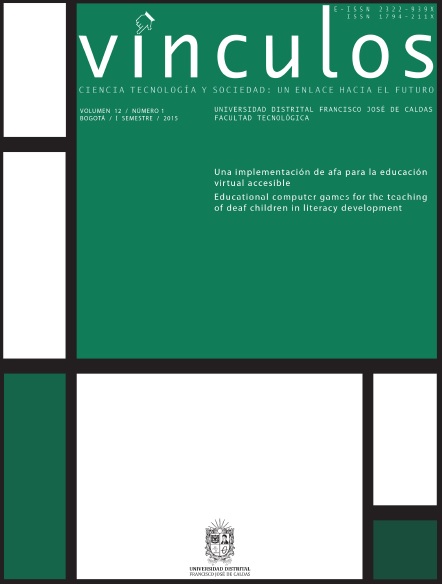
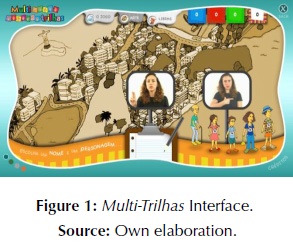
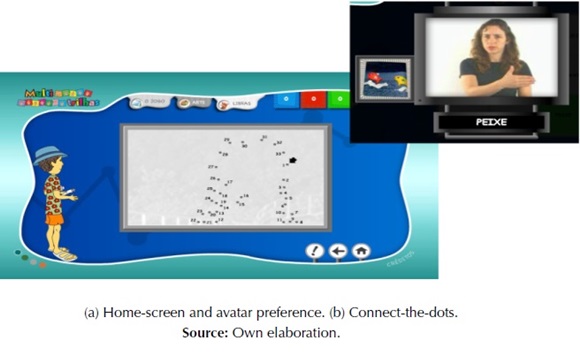
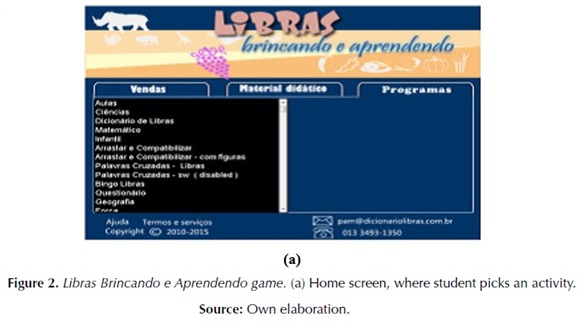
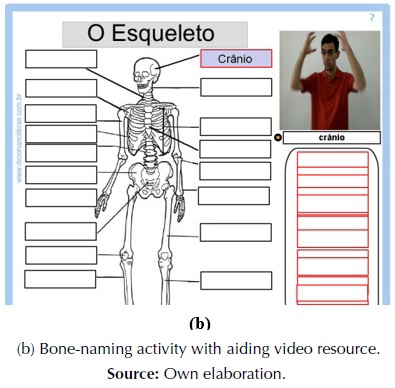
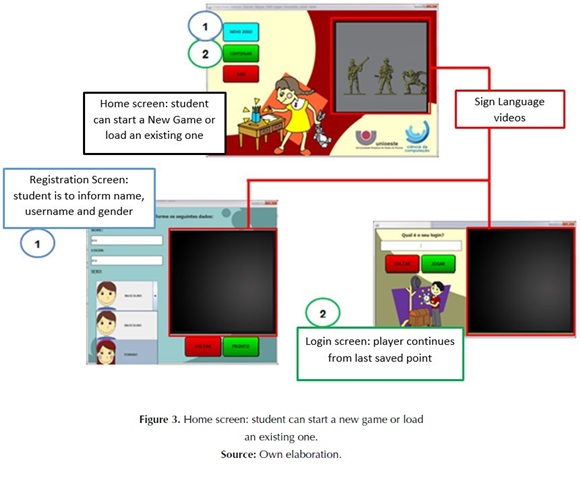
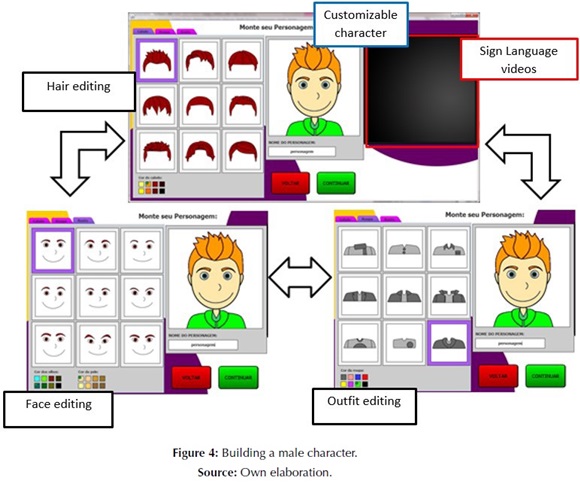

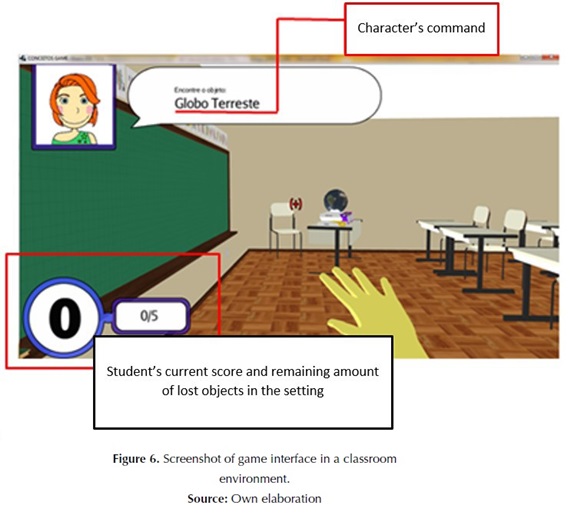
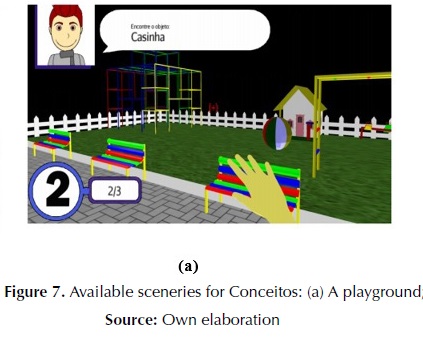
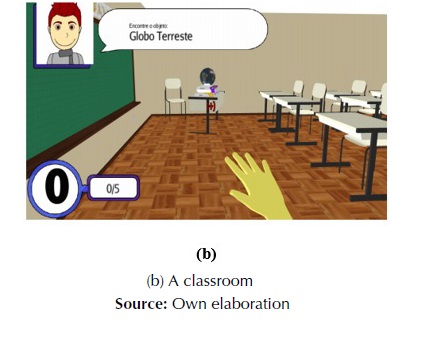
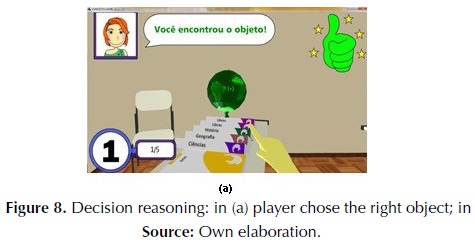
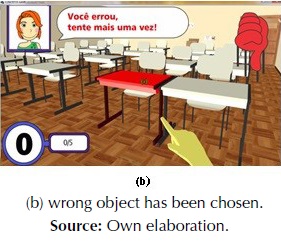

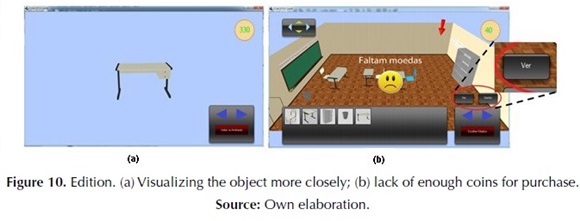
2.png)



